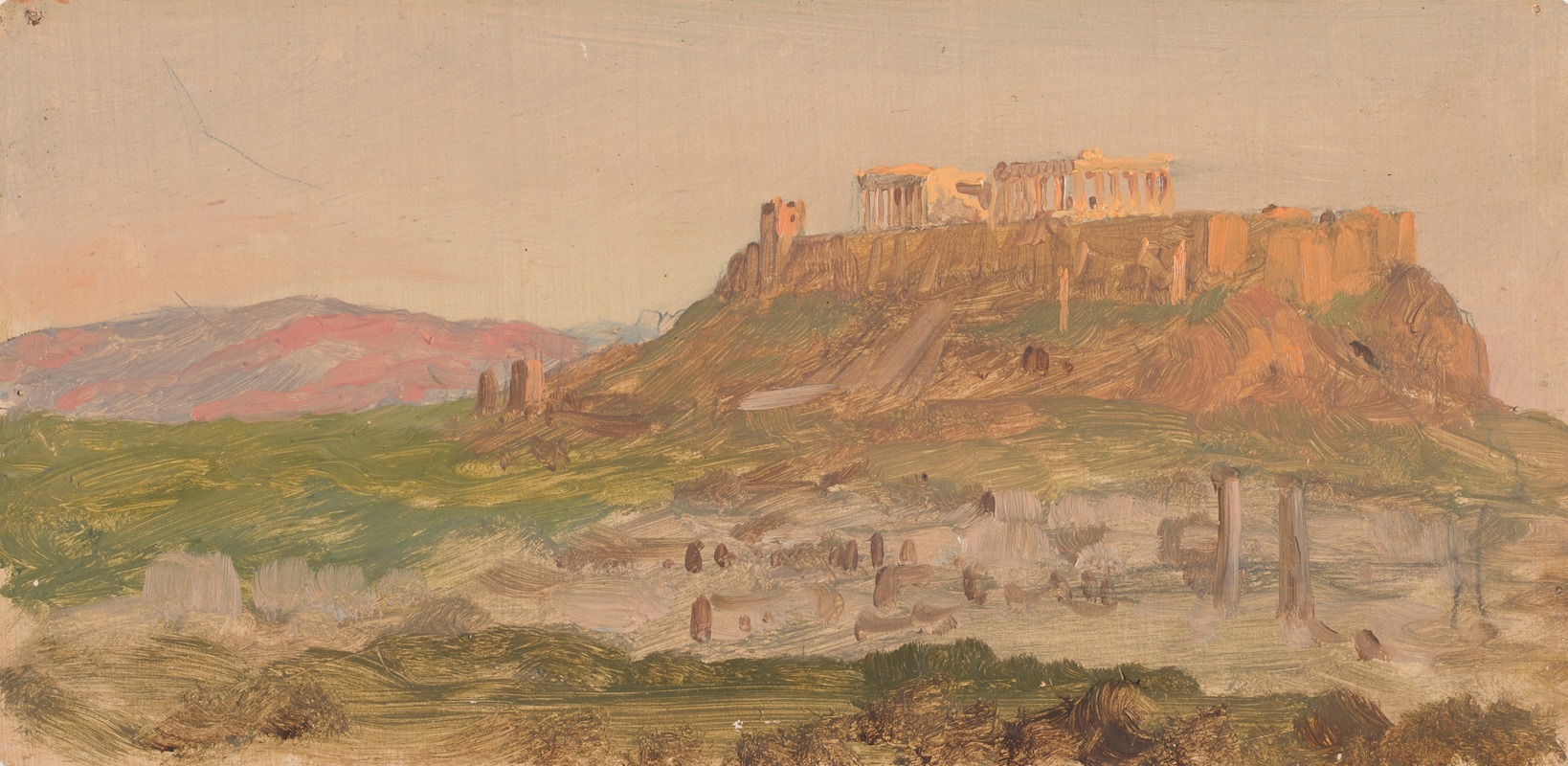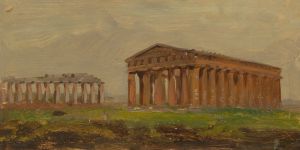
View of the Acropolis from the South, Athens
A hand-painted replica of Frederic Edwin Church’s masterpiece View of the Acropolis from the South, Athens, meticulously crafted by professional artists to capture the true essence of the original. Each piece is created with museum-quality canvas and rare mineral pigments, carefully painted by experienced artists with delicate brushstrokes and rich, layered colors to perfectly recreate the texture of the original artwork. Unlike machine-printed reproductions, this hand-painted version brings the painting to life, infused with the artist’s emotions and skill in every stroke. Whether for personal collection or home decoration, it instantly elevates the artistic atmosphere of any space.
"View of the Acropolis from the South, Athens" is a painting by the renowned American landscape artist Frederic Edwin Church. Church, a central figure in the Hudson River School of American landscape painters, is celebrated for his detailed and dramatic depictions of natural and historical scenes. This particular painting reflects his interest in capturing iconic landmarks and his ability to convey the grandeur of historical sites through his art.
Frederic Edwin Church was born in 1826 in Hartford, Connecticut, and showed an early aptitude for art. He became a student of Thomas Cole, the founder of the Hudson River School, and quickly developed his own style characterized by meticulous attention to detail and a fascination with light and atmosphere. Church's travels played a significant role in his artistic development, providing him with a wealth of subjects to explore in his paintings.
"View of the Acropolis from the South, Athens" was created during a period when Church was extensively traveling. In the late 1860s and early 1870s, Church embarked on a grand tour of Europe and the Middle East, a journey that greatly influenced his work. This painting is a result of his visit to Greece, where he was inspired by the ancient ruins and the rich history of the region.
The Acropolis of Athens is one of the most significant ancient citadels in the world, and it has been a source of inspiration for countless artists and scholars. Church's depiction of the Acropolis from the south captures the iconic Parthenon and other structures, set against the backdrop of the Athenian landscape. His use of light and shadow highlights the architectural details of the ancient buildings, while the surrounding landscape is rendered with the lushness and vibrancy typical of Church's work.
Church's painting not only showcases his technical skill but also reflects the 19th-century American fascination with classical antiquity. During this time, there was a growing interest in ancient Greek and Roman culture, architecture, and philosophy, which was seen as a foundation for Western civilization. By painting the Acropolis, Church was engaging with this cultural dialogue and contributing to the appreciation of classical heritage.
The painting is also notable for its composition and perspective. By choosing a vantage point from the south, Church provides a unique view of the Acropolis, emphasizing its prominence and the way it dominates the surrounding landscape. This perspective allows viewers to appreciate the strategic and symbolic significance of the Acropolis in ancient Athens.
"View of the Acropolis from the South, Athens" is an exemplary work that demonstrates Frederic Edwin Church's ability to blend artistic skill with historical and cultural themes. His painting continues to be admired for its beauty and its capacity to evoke the grandeur of one of the world's most famous historical sites. Church's work remains influential, and his paintings are held in high regard in museums and collections around the world, where they continue to inspire and educate audiences about the intersection of art, history, and nature.


















